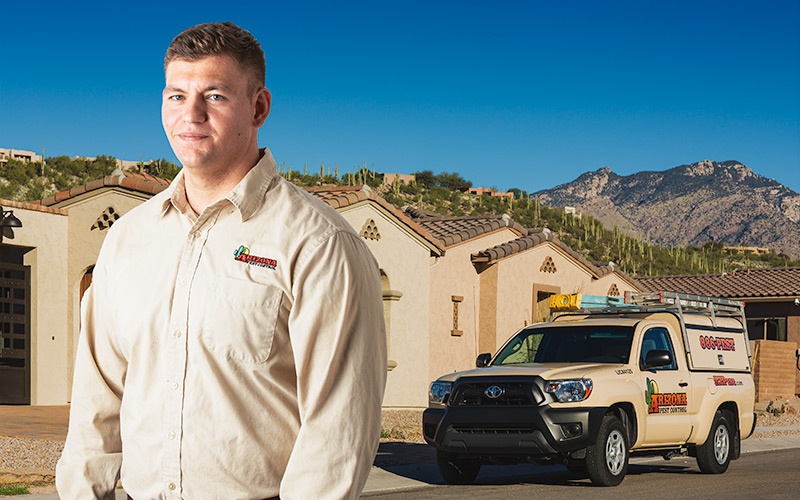There are two types of homes in Arizona: those that have termites and those that will have them. Your home is your biggest single investment, so protecting it should be a top priority. Termites cost Arizona homeowners hundreds of millions of dollars each year. That’s why it’s important to know about termites, be able to recognize if there’s an issue and what to do about it.
How common are termites in Arizona?
Statewide, there are estimated 3 to 5 termite colonies per acre of land. Recent studies in the Tucson area show a staggering 12 to 18 colonies per acre. Multiply that by each colony having upwards of 100,000 individual termites and the numbers will be shocking!
What termites are found most often in Arizona?
There are 18 species of termites in Arizona, but only a few present problems: Two types of subterranean termites are the most common here – desert and arid-land. These underground pests need contact with the soil as a source of moisture. Tiny but aggressive, they use mud tubes to reach above-ground wood, and once they enter your home, they chew through wood and drywall at an alarming pace.
Drywood termites pose a unique risk, because they do not require as much moisture as subterranean termites. Instead, they can live undetected inside wooden structures for long periods. By the time you notice clues to their presence, such as dried out wood pellets that have overflowed from their tunnel, large portions of your wood will already be unsalvageable and damage can be severe.
How do I know if I have termites?
The signs of termite activity depend upon the type of termites you have. Drywood termites burrow deep within wooden structures; subterranean termites are found underground. You may have termites if you spot any of the following:
- Discolored or drooping drywall
- Peeling paint that resembles water damage
- Wood that sounds hollow when tapped
- Small, pinpoint holes in drywall
- Buckling wooden or laminate floor boards
- Tiles loosening from the added moisture termites can introduce to your floor
- Excessively squeaky floorboards
- Crumbling, damaged wood
- Stuck windows or doors
- Maze-like patterns in furniture, floor boards or walls
- Mounds of drywood termite pellets, often resembling small piles of salt or pepper
- Piles of wings left behind after swarms, often resembling fish scales
- Mud tubes climbing the foundation of your home
- Flying termite swarms anywhere on your property
The warm and dry climate in Arizona is perfect for termites to thrive, so you can anticipate seeing them just about any time of the year. Most homeowners tend to see them anywhere from March to November, although infestations are not limited to those months alone.
What are the treatment options?
Because of the specialized equipment and chemicals needed to effectively and safely treat your home, it’s nearly always best to hire a professional. Most termite control in Arizona is done via liquid soil treatments around the house or baiting:
- The liquid treatment most often is Termidor, the leading and most effective termiticide for eliminating and controlling termites. Termidor is made from a revolutionary non-repellent and undetectable chemical technology. That means termites cannot see, smell, taste or avoid Termidor. Instead they contact, ingest and share it with their nest-mates.
- The second is a baiting system that attempts to attract termites and subsequently poison the termite colony. The baiting system approach calls for the bait stations to be placed around the house and checked every three months to determine if termites have infested the wood bait in the station.
Both methods are people-, pet- and environmental friendly. It’s best to discuss the pros and cons of each with your pest management professional and decide which technique is best for you.
Protect your most valuable asset – your Tucson home – from termites and their damage. Get a no-obligation inspection and estimate from a termite control professional.











